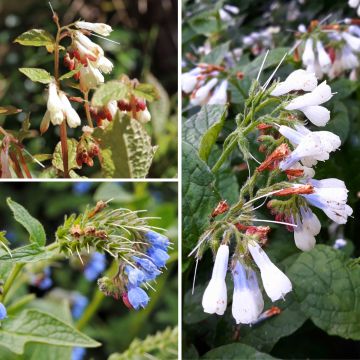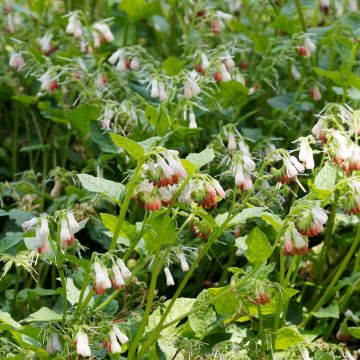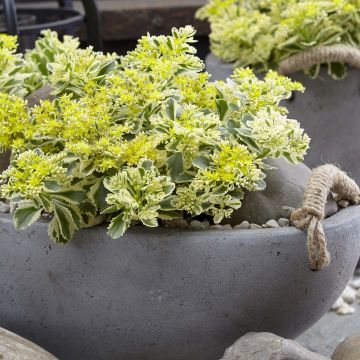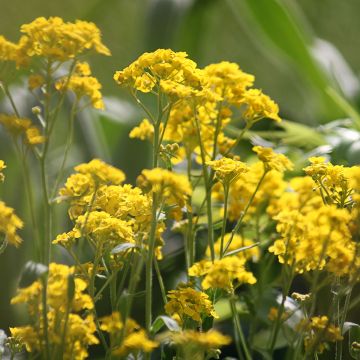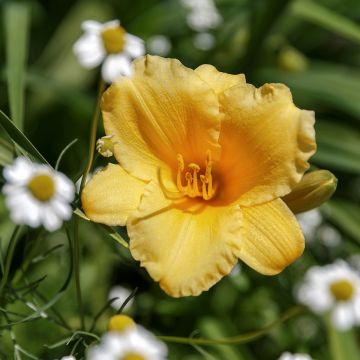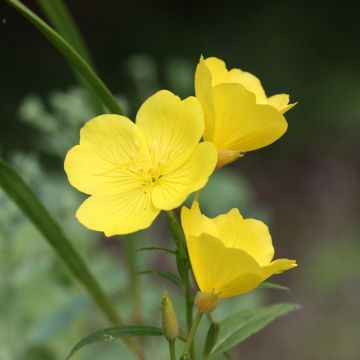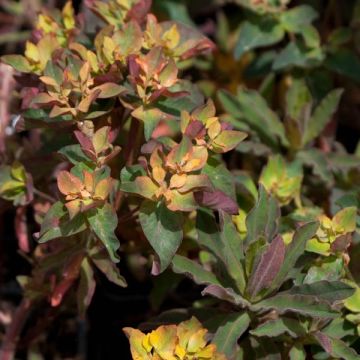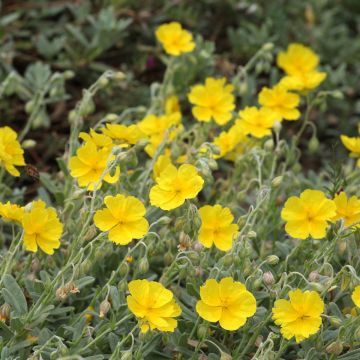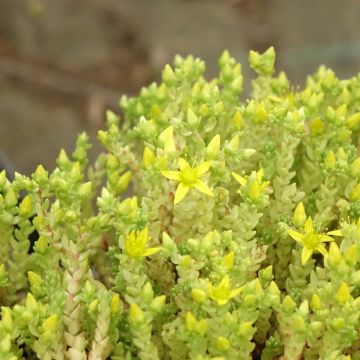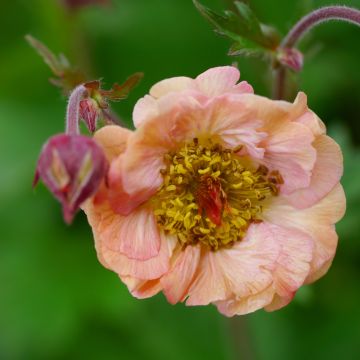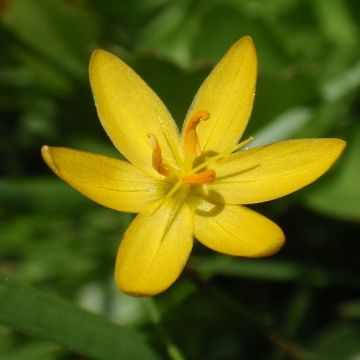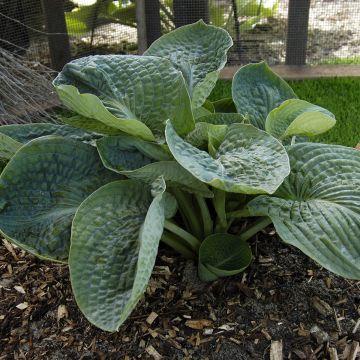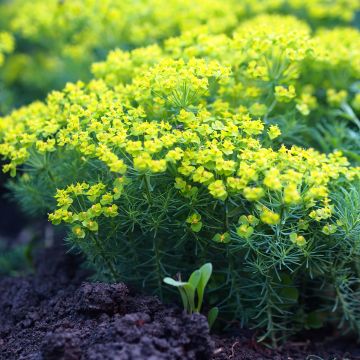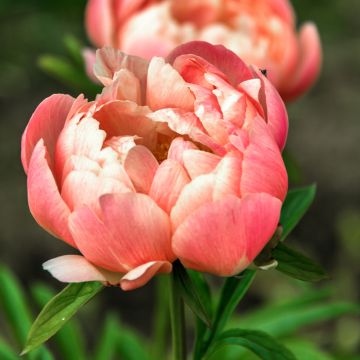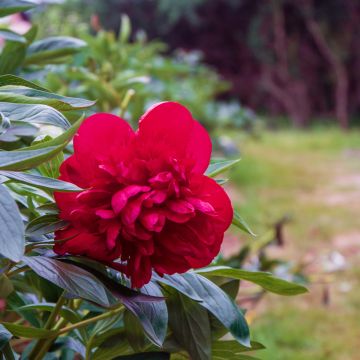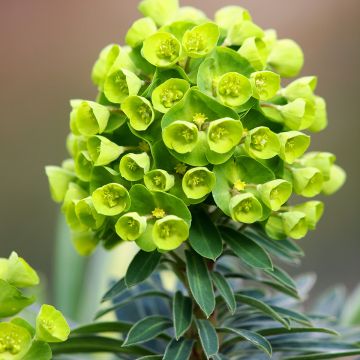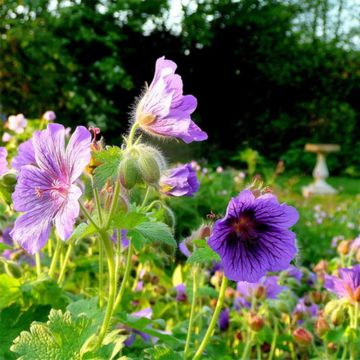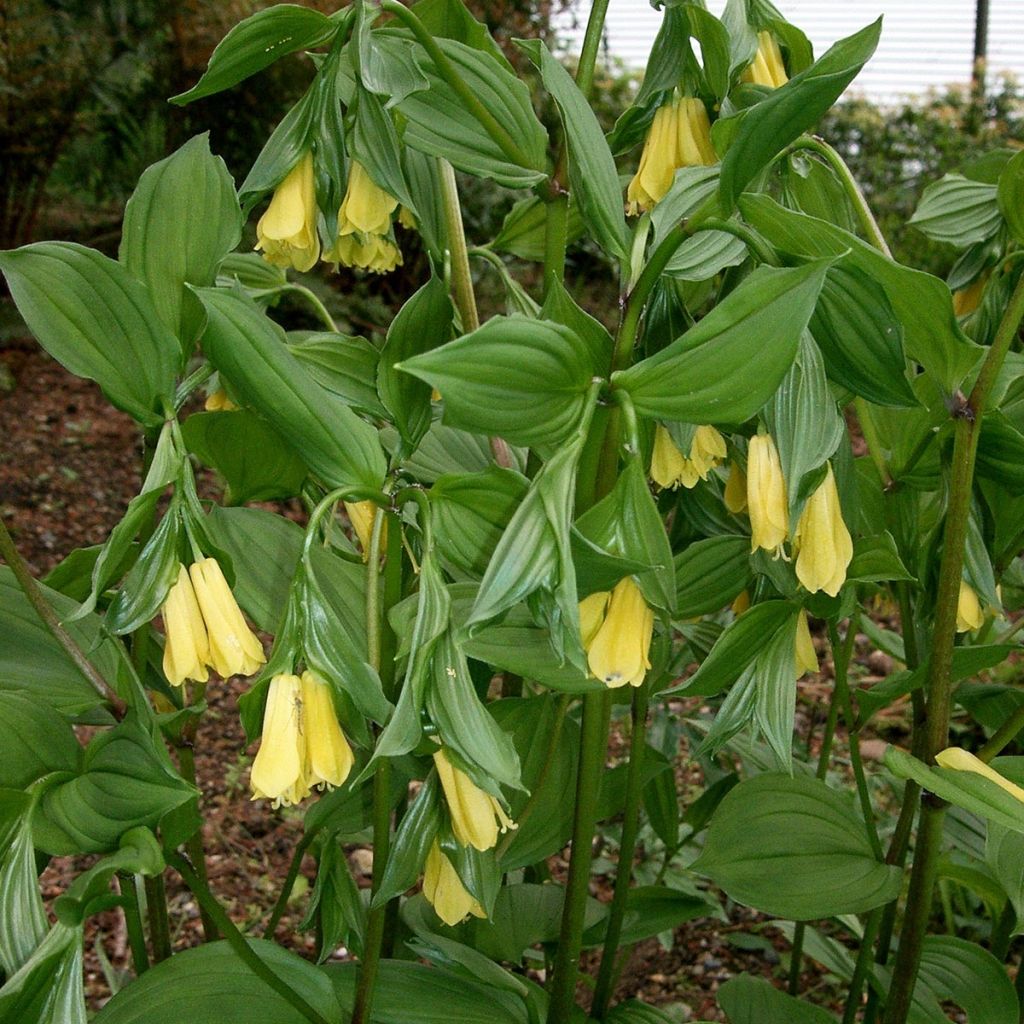

Disporum uniflorum - Cloche des fées de Corée
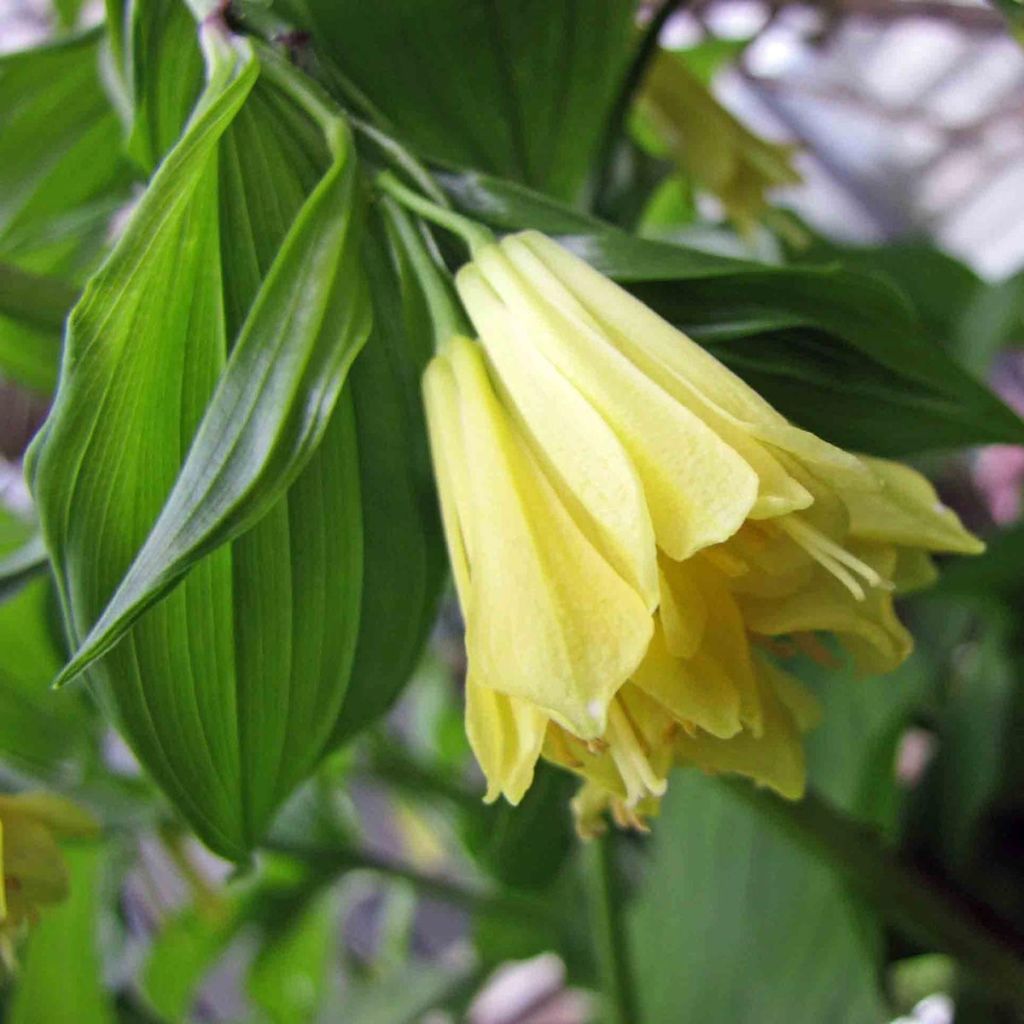

Disporum uniflorum - Cloche des fées de Corée
Disporum uniflorum
Disporum uniflorum
Fairy bells
Why not try an alternative variety in stock?
View all →This plant carries a 12 months recovery warranty
More information
We guarantee the quality of our plants for a full growing cycle, and will replace at our expense any plant that fails to recover under normal climatic and planting conditions.
From €5.90 for pickup delivery and €6.90 for home delivery
Express home delivery from €8.90.
Does this plant fit my garden?
Set up your Plantfit profile →
Description
Disporum uniflorum, formerly known as Disporum flavens, is a beautiful perennial plant for shady areas. Related to Solomon's Seal, this rhizomatous plant forms a clump of fresh green leafy stems that come alive in spring with delicate pale yellow bell-shaped flowers, followed by decorative blue-black berries later in the season. This Korean species, perfectly hardy, does not retain its foliage in winter. It easily adapts to the garden in a moist, humus-rich, non-calcareous soil, and also thrives in containers, always in partial shade or not too dense shade.
Disporum uniflorum, sometimes given as a synonym of Disporum sessile var. flavens, belongs to the Colchicaceae family. This botanical species is native to Korea where it grows on the edge of forests, on acidic to very acidic soils. It is a deciduous perennial plant with a creeping rhizome but without stolons, spreading and thickening over time without becoming invasive.
Each spring, this plant produces quite spectacular young shoots that are upright and curved, unfolding into flexible stems that are both erect and trailing, with few branches. It forms a very flexible clump of about 45 cm (18in) in all directions. The foliage consists of alternate leaves, measuring 5 to 8 cm (2 to 3in) long and 3 cm (1in) wide, strongly lanceolate and elongated, with prominent parallel veins. They are arranged on two ranks on either side of the stem, with a very bright, glossy green lamina. Flowering occurs in May-June, in the form of rather large tubular flowers, not fully open, 4 cm (2in) long, of a light yellow colour, clustered in 2 or 3 pendulous units, arising from the terminal part of the stems or from the axils of the leaves. This is followed by fruits that turn from red to blue-black, spherical, measuring 8 to 10 mm (1in) in diameter.
Disporum uniflorum will appreciate the moist areas of the garden, adding an exotic touch. It is easily cultivated in pots, allowing it to be paired with larger plants on the patio that provide the shade it seeks. This plant requires little care and tolerates competition from the roots of trees and bushes, but cannot tolerate any drought. It can be planted in woodland or dappled sunlight, to accompany the spring blooms of Magnolias, Rhododendrons, Pieris, camellias, and other hydrangeas. In these beds at the base of shrubs, for example, you can pair it with Brunnera macrophylla Jack Frost, tulips 'Spring Green', and golden buttercups. Stunning in a flower pot, it can be paired with blue squills, followed by Fatsia, Papyrus, Colocasia ...
Report an error about the product description
Disporum uniflorum in pictures
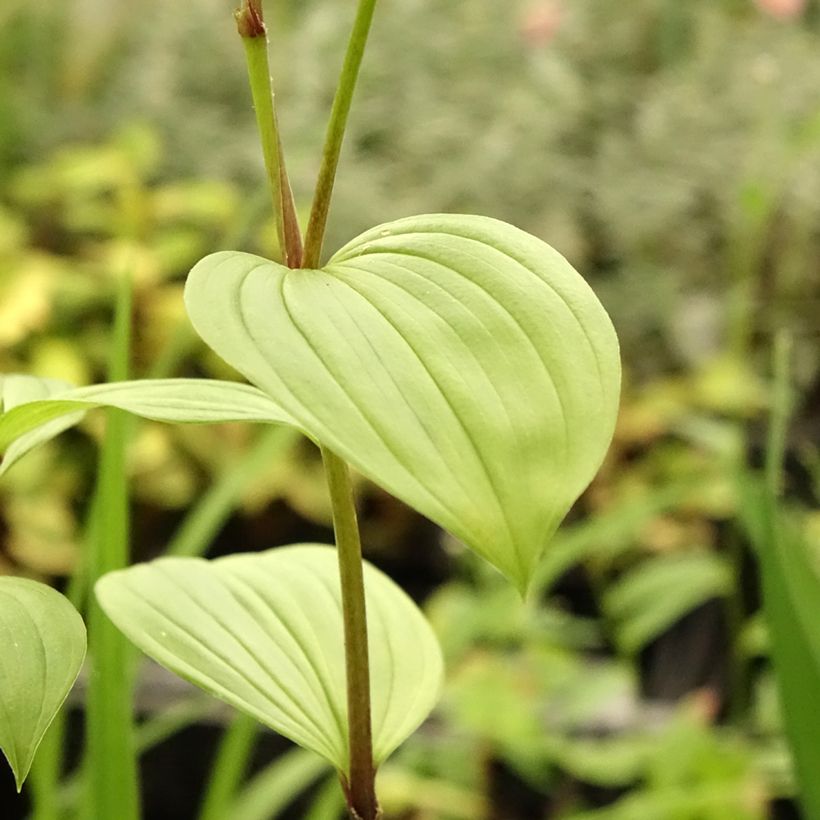

Flowering
Foliage
Plant habit
Botanical data
Disporum
uniflorum
Liliaceae (Colchicaceae)
Fairy bells
East Asia
Other Perennials A to Z
Planting and care
Disporum uniflorum appreciates humus-rich, acidic to neutral, or even peaty, moist but well-drained soils. Clay soils and waterlogged conditions in winter can cause its roots to rot, and it is very intolerant to limestone. Plant it in partial shade or not too dense shade. Cultivating it in pots is easy in a substrate composed of leaf compost regularly enriched with well-decomposed compost. Watering with calcareous water should be avoided, as this plant prefers rainwater. It is sometimes susceptible to attacks from gastropods and whiteflies. Divide the clumps in spring.
Planting period
Intended location
Care
This item has not been reviewed yet - be the first to leave a review about it.
Spring flowering perennials
Haven't found what you were looking for?
Hardiness is the lowest winter temperature a plant can endure without suffering serious damage or even dying. However, hardiness is affected by location (a sheltered area, such as a patio), protection (winter cover) and soil type (hardiness is improved by well-drained soil).

Photo Sharing Terms & Conditions
In order to encourage gardeners to interact and share their experiences, Promesse de fleurs offers various media enabling content to be uploaded onto its Site - in particular via the ‘Photo sharing’ module.
The User agrees to refrain from:
- Posting any content that is illegal, prejudicial, insulting, racist, inciteful to hatred, revisionist, contrary to public decency, that infringes on privacy or on the privacy rights of third parties, in particular the publicity rights of persons and goods, intellectual property rights, or the right to privacy.
- Submitting content on behalf of a third party;
- Impersonate the identity of a third party and/or publish any personal information about a third party;
In general, the User undertakes to refrain from any unethical behaviour.
All Content (in particular text, comments, files, images, photos, videos, creative works, etc.), which may be subject to property or intellectual property rights, image or other private rights, shall remain the property of the User, subject to the limited rights granted by the terms of the licence granted by Promesse de fleurs as stated below. Users are at liberty to publish or not to publish such Content on the Site, notably via the ‘Photo Sharing’ facility, and accept that this Content shall be made public and freely accessible, notably on the Internet.
Users further acknowledge, undertake to have ,and guarantee that they hold all necessary rights and permissions to publish such material on the Site, in particular with regard to the legislation in force pertaining to any privacy, property, intellectual property, image, or contractual rights, or rights of any other nature. By publishing such Content on the Site, Users acknowledge accepting full liability as publishers of the Content within the meaning of the law, and grant Promesse de fleurs, free of charge, an inclusive, worldwide licence for the said Content for the entire duration of its publication, including all reproduction, representation, up/downloading, displaying, performing, transmission, and storage rights.
Users also grant permission for their name to be linked to the Content and accept that this link may not always be made available.
By engaging in posting material, Users consent to their Content becoming automatically accessible on the Internet, in particular on other sites and/or blogs and/or web pages of the Promesse de fleurs site, including in particular social pages and the Promesse de fleurs catalogue.
Users may secure the removal of entrusted content free of charge by issuing a simple request via our contact form.
The flowering period indicated on our website applies to countries and regions located in USDA zone 8 (France, the United Kingdom, Ireland, the Netherlands, etc.)
It will vary according to where you live:
- In zones 9 to 10 (Italy, Spain, Greece, etc.), flowering will occur about 2 to 4 weeks earlier.
- In zones 6 to 7 (Germany, Poland, Slovenia, and lower mountainous regions), flowering will be delayed by 2 to 3 weeks.
- In zone 5 (Central Europe, Scandinavia), blooming will be delayed by 3 to 5 weeks.
In temperate climates, pruning of spring-flowering shrubs (forsythia, spireas, etc.) should be done just after flowering.
Pruning of summer-flowering shrubs (Indian Lilac, Perovskia, etc.) can be done in winter or spring.
In cold regions as well as with frost-sensitive plants, avoid pruning too early when severe frosts may still occur.
The planting period indicated on our website applies to countries and regions located in USDA zone 8 (France, United Kingdom, Ireland, Netherlands).
It will vary according to where you live:
- In Mediterranean zones (Marseille, Madrid, Milan, etc.), autumn and winter are the best planting periods.
- In continental zones (Strasbourg, Munich, Vienna, etc.), delay planting by 2 to 3 weeks in spring and bring it forward by 2 to 4 weeks in autumn.
- In mountainous regions (the Alps, Pyrenees, Carpathians, etc.), it is best to plant in late spring (May-June) or late summer (August-September).
The harvesting period indicated on our website applies to countries and regions in USDA zone 8 (France, England, Ireland, the Netherlands).
In colder areas (Scandinavia, Poland, Austria...) fruit and vegetable harvests are likely to be delayed by 3-4 weeks.
In warmer areas (Italy, Spain, Greece, etc.), harvesting will probably take place earlier, depending on weather conditions.
The sowing periods indicated on our website apply to countries and regions within USDA Zone 8 (France, UK, Ireland, Netherlands).
In colder areas (Scandinavia, Poland, Austria...), delay any outdoor sowing by 3-4 weeks, or sow under glass.
In warmer climes (Italy, Spain, Greece, etc.), bring outdoor sowing forward by a few weeks.



































